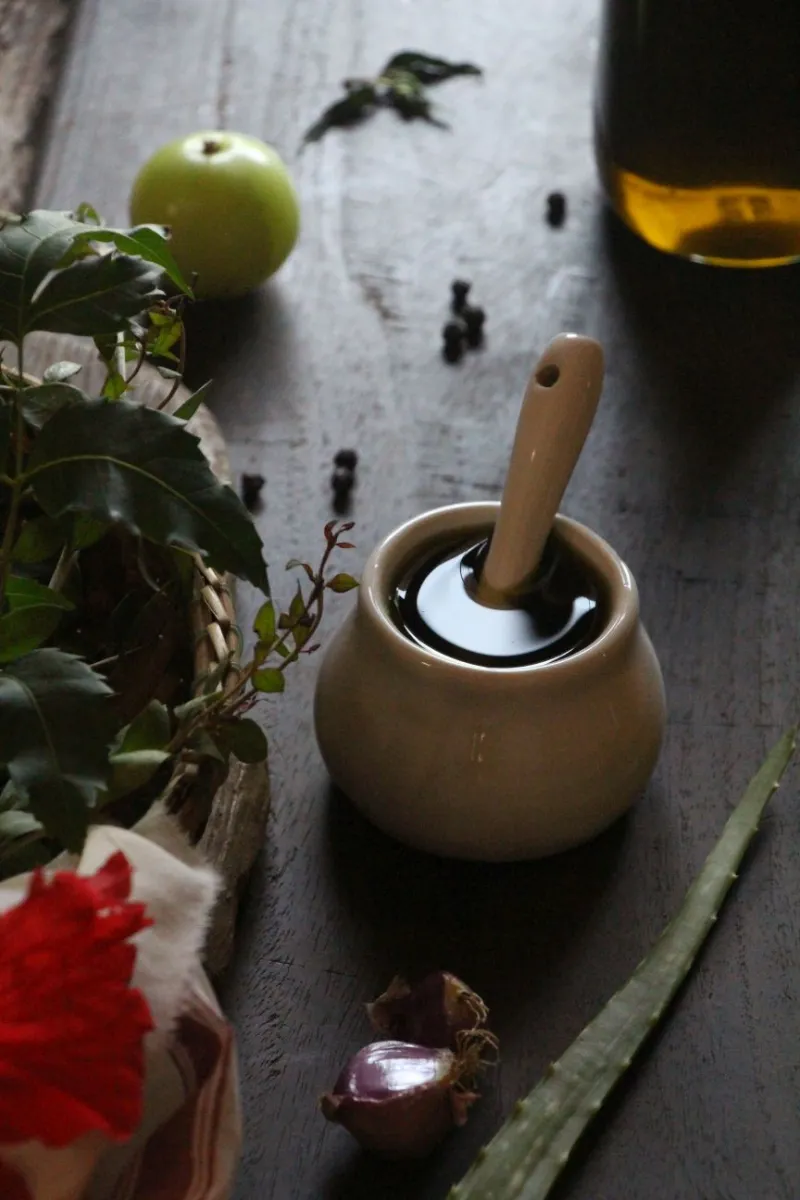Skin Problem In Pollution: Fog and pollution can have a significant impact on your skin and hair. Pollution can cause acne, itching, and other skin problems, while hair can suffer from dryness and hair fall. In this video, we will share tips on how to take care of your skin and hair during these weather conditions. Learn simple and effective ways to protect your skin and hair from the harmful effects of fog and pollution.
Skin Problems in Pollution: Understanding the Impact and Protecting Yourself
Modern urban life comes with its challenges, one of the most persistent being pollution. Fog and pollution, common during winter and in highly industrialized areas, can wreak havoc on your skin and hair. The combination of harmful particles, toxins, and environmental stressors creates a hostile environment, leading to a variety of skin issues like acne, itching, dryness, and premature aging. Similarly, hair problems like dryness, dandruff, and hair fall also intensify under such conditions.
This guide delves into the effects of pollution on your skin and hair, explores common problems caused by it, and provides actionable tips to protect and nourish them. With the right care and strategies, you can safeguard yourself from the harmful effects of fog and pollution while maintaining your natural beauty.
1. How Pollution Affects the Skin
Your skin is the largest organ and the body’s first line of defense against external aggressors, making it highly vulnerable to pollutants in the environment.
Common Pollutants That Harm the Skin
- Particulate Matter (PM): Fine particles in the air, such as dust, soot, and smoke, clog pores and cause irritation.
- Nitrogen Dioxide (NO2): Leads to oxidative stress, which damages skin cells.
- Heavy Metals: Arsenic, lead, and mercury from industrial emissions can weaken the skin barrier.
- UV and Infrared Radiation: Worsened by ozone depletion, pollution increases sun sensitivity and pigmentation.
Effects of Pollution on Skin
- Acne Breakouts: Clogged pores from dirt and pollutants lead to blackheads, whiteheads, and pimples.
- Dryness and Dehydration: Pollutants strip natural oils from the skin, leaving it dry and flaky.
- Itching and Redness: Irritants trigger allergic reactions, causing inflammation and discomfort.
- Premature Aging: Free radicals from pollution accelerate wrinkles, fine lines, and sagging skin.
- Hyperpigmentation: Exposure to harmful substances causes dark spots and uneven skin tone.
- Eczema and Psoriasis Flare-ups: Sensitive skin conditions worsen with pollutants.
2. How Pollution Affects the Hair
Just like the skin, your hair and scalp bear the brunt of pollution. Fog and smog carry harmful particles that settle on the scalp, weakening hair strands and causing damage.
Effects of Pollution on Hair
- Dryness: Pollutants strip moisture from hair, leaving it brittle and prone to breakage.
- Hair Fall: Weakening of hair follicles due to poor scalp health leads to excessive shedding.
- Dandruff and Itchy Scalp: Polluted air causes buildup, clogging hair follicles and triggering scalp infections.
- Loss of Shine: Dirt and grime make hair dull and lifeless.
- Thinning Hair: Chronic exposure to toxins can reduce hair density over time.
3. Common Skin Problems Due to Fog and Pollution
Here’s a closer look at some prevalent skin conditions caused by pollution:
Acne and Blackheads
Pollution particles clog pores, leading to inflammation and acne breakouts. Additionally, the toxins promote sebum production, worsening the problem.
Dry and Dull Skin
Pollution depletes the skin of its natural moisture and elasticity, making it appear lifeless.
Itching and Allergic Reactions
Exposure to irritants, especially during foggy weather, can lead to itching, redness, and rashes.
Hyperpigmentation
Pollutants stimulate melanin production, leading to dark spots and uneven patches.
Premature Aging
Fine lines, wrinkles, and sagging skin are exacerbated by oxidative stress caused by pollution.
4. Effective Skincare Tips to Combat Pollution
Taking care of your skin amidst rising pollution levels requires consistent effort and effective strategies. Here are some essential tips:
Daily Cleansing and Hydration
- Cleanse Thoroughly: Use a gentle, pollution-specific cleanser to remove dirt and grime twice a day.
- Exfoliate: Use a mild exfoliant weekly to unclog pores and remove dead skin cells.
- Hydrate: Apply a hydrating toner or serum to replenish lost moisture.
Moisturize and Protect
- Use a moisturizer with antioxidants like Vitamin C or E to repair skin damage.
- Apply sunscreen with SPF 30 or higher, even during foggy days, as UV rays can penetrate clouds.
Detox Your Skin
- Use a clay mask or charcoal-based product to absorb toxins.
- Incorporate aloe vera or green tea extracts to soothe irritated skin.
Enhance Your Diet
- Consume antioxidant-rich foods like berries, spinach, and nuts to fight free radicals.
- Stay hydrated by drinking plenty of water and herbal teas.
Avoid Smoking and Alcohol
These habits worsen the effects of pollution by increasing free radicals in the body.
5. Effective Haircare Tips to Combat Pollution
Protecting your hair from fog and pollution requires a routine that minimizes exposure and provides nourishment:
Cover Your Hair
- Wear a scarf or hat when stepping out to shield your hair from pollutants.
- Consider using a leave-in conditioner with UV and pollution protection.
Wash Regularly
- Cleanse your scalp with a mild, sulfate-free shampoo to remove buildup.
- Avoid overwashing, as it can strip your hair of natural oils.
Nourish with Oils and Masks
- Massage your scalp with coconut or argan oil to improve blood circulation and reduce dryness.
- Use a hydrating hair mask weekly to restore moisture.
Strengthen with a Healthy Diet
- Include biotin, omega-3 fatty acids, and proteins in your diet to strengthen hair roots.
- Stay hydrated to prevent dryness and maintain scalp health.
6. DIY Remedies for Skin and Hair Protection
For Skin
- Honey and Aloe Vera Mask: Mix equal parts honey and aloe vera gel to soothe and hydrate the skin.
- Green Tea Toner: Brew green tea, cool it, and use it as a natural toner to reduce redness and inflammation.
- Cucumber and Yogurt Pack: Apply this cooling mask to refresh tired skin and reduce pollution damage.
For Hair
- Apple Cider Vinegar Rinse: Dilute apple cider vinegar in water to remove buildup and restore shine.
- Egg and Olive Oil Mask: Combine egg yolk with olive oil to nourish dry hair and strengthen follicles.
- Fenugreek Paste: Soak fenugreek seeds overnight, grind them into a paste, and apply to the scalp for dandruff control.
7. Long-Term Strategies to Protect Skin and Hair
Maintain Indoor Air Quality
- Use air purifiers to minimize indoor pollution.
- Add indoor plants like aloe vera and peace lilies to improve air quality.
Choose Pollution-Fighting Products
Look for products with ingredients like niacinamide, Vitamin C, and activated charcoal that combat pollution’s effects.
Regular Detox
- Go for facials or professional treatments that detoxify and rejuvenate the skin.
- Consider hair spa treatments to restore scalp health.
8. Why Skin and Hair Protection Matters in Foggy Weather
Fog might seem harmless, but it often contains harmful pollutants like sulfur dioxide and nitrogen dioxide that settle on the skin and scalp. This can exacerbate existing problems and lead to long-term damage. By adopting proactive skincare and haircare practices, you can shield yourself from these harmful effects, ensuring healthier skin and hair even in challenging weather conditions.
Conclusion: Healthy Skin and Hair, Despite Pollution
While fog and pollution are unavoidable realities in many parts of the world, their impact on your skin and hair can be minimized with the right care. Regular cleansing, moisturizing, and nourishment, combined with a healthy lifestyle, can go a long way in protecting your natural beauty. By staying informed and consistent, you can confidently face the challenges of polluted environments and maintain radiant skin and luscious hair all year round.









